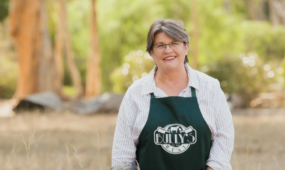Reinventing the Dynacast dynasty
Lifestyle
WHEN Greg Norman took the golfing world by storm in the 1980s and ’90s, the sport was riding an unprecedented wave of success in Australia and Dynacast golf clubs could be found in almost every golf shop.

Sign up to receive notifications about new stories in this category.
Thank you for subscribing to story notifications.
As one of Australia’s biggest entry-level golf club brands in the 1980s and ’90s, Dynacast produced about 250,000 clubs a year and employed 15 full-time manufacturing staff to assemble them in South Australia under the guidance of Managing Director Eric Rowe.
But the rise of home brands at major chain stores, cheap imports and an end to the golfing boom forced the golf club manufacturer to reinvent itself to remain competitive.
While Eric is still heavily involved with the business, his son Daniel now plays a big role in the day-to-day running of the Dynacast Golf Group as its General Manager.
“The cheap entry level set side of the market that used to boom has dried right up for us, so diversification had to come along,” Daniel said.
Dynacast began to diversify when it became the Australian wholesaler and distributor for Garmin Golf GPS devices in 2011. It became a distributor for KBS golf shafts in 2012 and an assembly centre and distributor for Bridgestone Golf in 2014. It is the only place in the world outside of Japan and the United States attested to assemble Bridgestone clubs, which it makes for the Australian and New Zealand markets.
While Bridgestone is still a relatively small player in the golf club market in Australia, its golf balls, which are also distributed by Dynacast, are among the biggest sellers worldwide.
Tour players Fred Couples, Matt Kuchar, Bryson DeChambeau, Brandt Snedeker and Karrie Webb are part of the Bridgestone stable.
Although Dynacast still produces its own brands, it has reduced its manufacturing to about 50,000 clubs a year.
Now there is just one assembler and one staff member assigned to cleaning and dispatch at its Lonsdale plant, where it has been located since 2006 after moving from McLaren Vale.
“We were fortunate enough and the business was set up well enough that we’ve been able to shoulder a lot of blows, deal with the industry changes and be in a strong enough financial position to weather these storms,” Daniel said.
“This year we’re seeing very good growth over last year in an industry that’s generally not seeing growth so we’re quite optimistic – there’s definitely going to be road blocks there but I think there’s also good opportunities and we’re going into it with enthusiasm.”
Daniel said the strengths of assembling in Australia were maintaining the ability to customise products more easily so they can cater to specific demands and reduced freight costs while the big downside was cost.
“You can get a club assembled in China for a dollar,” he said.
Daniel said that part of the problem with the golf industry was that it was seen as a glamorous industry.
“Everyone tends to think if you’re in the golf industry you must play golf every day and have all the gear but it’s just another industry. But because of that there’s a lot of people who think they should be in the golf industry and we’ve seen quite a number come and go over the years,” he said.
According to the 2015 National Golf Club Participation Report, golf membership in Australia peaked in 1998 at about 500,000 golfers. Since then it has steadily declined by 21 per cent to 397,063 in 2015. More than 50 per cent of golf club members are aged over 55. Just 19 per cent of club members are aged under 35.
“We’ve got some good players out there at the moment like Jason Day and Adam Scott who are good ambassadors but it just seems on a local level it’s not transferring.
“When Greg Norman was going huge every man and his dog wanted to play golf and Tiger Woods had a bit of a similar effect.”
Dynacast also manufactures junior clubs and is one of the biggest suppliers of mini-golf equipment in Australia.
Daniel said unlike the full version of the game, mini-golf participation was difficult to gauge.
“We just sent 10,000 pencils to one mini-golf place so they must be having a few rounds,” he said.
“We designed a mini-golf putter 30-odd years ago and that’s used around the world now so we’ve been doing that for a long time.”
The company has also become a distributor for the NRL’s range of club themed equipment such as bags and wood covers.
Daniel said the company’s biggest advantage was the fact it owned all its stock and premises, had over 700 accounts, and still maintained its core business.
“We still service the golf industry and we still glue together golf clubs,” he said.
“It is a strength being able to assemble your own products as you need it. The customization side of the market there’s still definitely a call for that. We might whittle it down a little bit but I don’t ever think we’ll get to the point where we’re not manufacturing.”
Jump to next article



